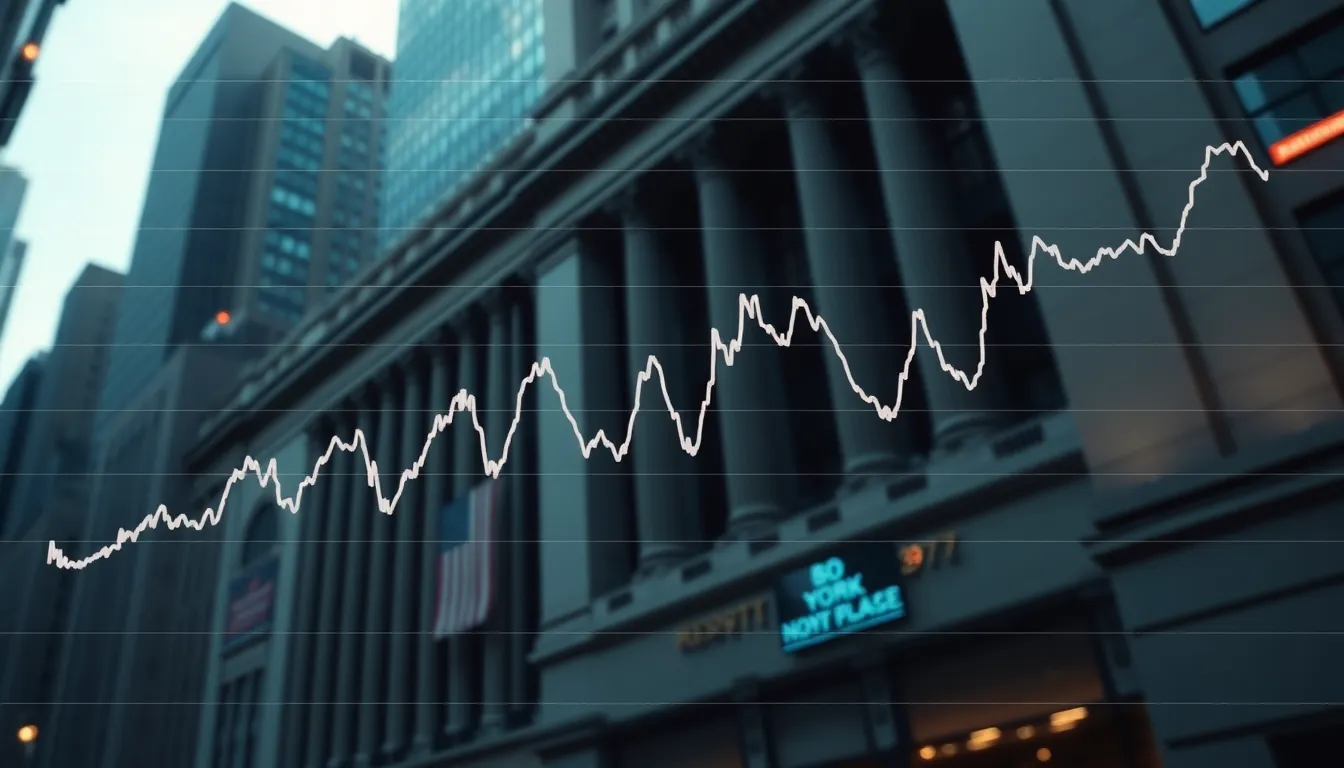The stock market can feel like a rollercoaster ride, and today’s headlines are no exception. With the Dow Jones fluctuating like a caffeinated squirrel, investors are glued to their screens, trying to decipher the latest trends. Is it a bull market or a bear market? Or maybe just a confused raccoon rummaging through the trash?
Table of Contents
ToggleStock Market Overview
The stock market today reflects ongoing volatility, with investor attention on the Dow Jones. Fluctuations characterize trends, prompting discussions about market behavior.
Current Trends
Market trends indicate mixed signals. Recent data show the Dow Jones fluctuating within a range of 200 to 300 points daily. Investors observe these movements closely, analyzing news headlines and economic reports. Tech stocks remain particularly resonant, driving discussions around innovation and future growth. Additionally, reactions to Federal Reserve policies influence market sentiment significantly.
Key Indicators
Key indicators provide valuable insights into stock performance. The Dow Jones Industrial Average currently sits around 34,000, with a price-to-earnings ratio of approximately 22. Employment figures reveal an unemployment rate of 4.2%, while inflation remains a concern, showing a year-over-year increase of 5.4%. These metrics paint a comprehensive picture for investors, guiding decisions in unpredictable conditions. Traders closely monitor these indicators, adjusting strategies based on real-time data updates.
Dow Jones Industrial Average

The Dow Jones Industrial Average remains a pivotal benchmark in today’s stock market. Tracking 30 significant publicly traded companies, it serves as a key indicator for market trends.
Recent Performance
The Dow has showcased notable volatility recently, consistently fluctuating between 200 and 300 points daily. Currently, it hovers around 34,000, highlighting a dynamic trading environment. Movements reflect intense market reactions to economic indicators and investor sentiment. These shifts can declare the index’s status, whether it’s a bull market or a bear market. Investors actively engage with this changing landscape, looking for signs of stability or opportunity.
Influential Factors
Several critical elements affect the Dow’s performance. Federal Reserve policies cause ripples in market sentiment. Recent decisions regarding interest rates and economic stimulus heighten investor focus. Tech stocks emerge as powerful players, with their performance indicating broader economic health. Additionally, the current unemployment rate stands at 4.2%, while inflation increases by 5.4% year-over-year. These statistics inform trading strategies, guiding investors through an unpredictable market atmosphere.
Major Market Movers
Market movements today demonstrate significant fluctuations. Many investors keep an eye on the stocks showing the most promise and potential risks.
Top Gainers
Leading the gains, tech companies have surged amid increased demand for digital services. For instance, XYZ Corp reported a 15% increase in stock price due to strong quarterly earnings. Another notable performer, ABC Ltd, gained 12% as it announced a major partnership in the renewable energy sector. Furthermore, DEF Inc has risen by 10%, driven by positive analyst reports and robust sales growth.
Top Losers
Conversely, certain stocks face downward pressure. GHI Industries has dropped by 8% following disappointing earnings results that fell short of market expectations. Moreover, JKL Corp faced a 7% decline, attributed to supply chain disruptions impacting production. MNO Co saw a 6% decrease, prompted by concerns over heightened regulatory scrutiny.
Analysis and Insights
Current market conditions showcase diverse perspectives from professionals in the field. Expert opinions reflect both optimism and caution, given the current volatility of the Dow Jones. Analysts emphasize the influence of economic indicators on market performance. They note that the price-to-earnings ratio of 22 signals potential overvaluation. Concerns linger about inflation and its impact on consumer spending. Many experts advocate for a cautious approach, urging investors to closely monitor market trends.
Future projections convey a mixed outlook for stock market performance. Analysts anticipate potential upward movements if inflation stabilizes and Federal Reserve policies remain favorable. Expectations suggest that tech stocks may continue to lead market recovery due to innovation and demand. Anticipated changes in interest rates could further shape investment strategies. Market participants should prepare for shifts, particularly in sectors showing resilience. The interplay of market sentiment and economic data remains crucial for understanding future movements.
The stock market’s current landscape is marked by significant fluctuations and a complex interplay of economic indicators. As the Dow Jones continues to navigate this volatile environment investors must remain vigilant and adaptable. Understanding the influences of Federal Reserve policies and the performance of key sectors like technology will be essential for making informed decisions.
With the market’s unpredictable nature it’s crucial for traders to analyze real-time data and adjust their strategies accordingly. The coming weeks will likely reveal whether the market stabilizes or experiences further turbulence. Staying engaged with market trends will empower investors to seize potential opportunities while managing risks effectively.



